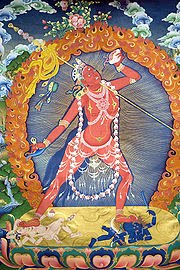Yoga originates in India and refers to traditional physical and mental disciplines. It is also associated with meditative disciplines in Hinduism and Buddhism. The word "yoga" has many meanings; In Sanskrit, it has many meanings and is derived from the root "to control" or "unite". The most "yogic" expressions stems back to early Buddhist sermons.
A school of philosophy was developed in India during the 4th and 5th centuries called "Yogacara" or, "yoga practice". There are physical postures (asanas) and breath movements (pranayamas). The goal of yoga is universal and that is, to improve health and achieve "moksha", which is liberation from all worldly suffering.
Let's begin to explore types of yoga....
The word Hatha is a compound of the words Ha and Tha meaning sun and moon. Hatha Yoga is what most people in the West associate with the word "Yoga" and is practiced for mental and physical health throughout the West.
Like Hatha, Vinyasa is a general term that is used to describe many different types of classes. Vinyasa, which means breath-synchronized movement, tends to be a more vigorous style based on the performance of a series of poses called Sun Salutations, in which movement is matched to the breath. A Vinyasa class will typically start with a number of Sun Salutations to warm up the body for more intense stretching that's done at the end of class.
Ashtanga practice is very physically demanding because of the constant movement from one pose to the next. In yoga terminology, this movement is called flow. Ashtanga is also the inspiration for what is often called Power Yoga.
Bikram is more generally referred to as Hot Yoga. It is practiced in a 95 to 100 degree room, which allows for a loosening of tight muscles and profuse sweating, which is thought to be cleansing.
Bhakti is devotional yoga. I teach Bhakti Vinyasa Yoga. It is told that the nine forms of Bhakti are:
1. Sravana (hearing of God's Lilas and stories),
2. Kirtana (singing of His glories),
3. Smarana (remembrance of His name and presence),
4. Padasevana (service of His feet),
5. Archana (worship of God),
6. Vandana (prostration to Lord),
7. Dasya (cultivating the Bhava of a servant with God),
8. Sakhya (cultivation of the friend-Bhava) and
9. Atmanivedana (complete surrender of the self).
Any method of Bhakti can be practiced and through it, one can achieve Divine illumination, or, as I feel, a deeper relationship with Jesus Christ. Though most Christian fundamentalists consider yoga a demonic influence, I beg to differ. If peace and serenity are achieved with devotion to Christ at the center, what unrest is caused? Perhaps distance from symbolism and structure. Is a society without a rigid structure the path to destruction? Why can't the "structure" equate to no structure? A world focused on non-judgment, no expectations, no competition, respect, and utopia?
For today, let one hour of your day consist of those things. Let us give thanks and gratitude for the time we gave to our bodies. To remove the distractions society and the media give us each day. Let His Grace fill us and sustain us until we allow Him the prayer He deserves once again. For no man can ever fill the voids within us.
Subscribe to:
Posts (Atom)







